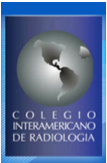Submissions
Submission Preparation Checklist
As part of the submission process, authors are required to check off their submission's compliance with all of the following items, and submissions may be returned to authors that do not adhere to these guidelines.-
Must be send in a separate word document and should include:
- Title (in Spanish and English)
- Abstract of maximum 250 words (in Spanish and English)
- Keywords (3-5) in Spanish and English
- Structured text body with introduction and/or background, materials and methods, results, discussion and conclusion
- Acknowledgments (when necessary)
- References according to Vancouver Standards
- Tables and numbered figures with corresponding legends - Articles must be send in Word format using plain font (Arial or Times New Roman, 10-11-point, double space).
-
The complete submission must include the following documents in separate files:
- Title page.
- Blinded manuscript.
- Figures.
- Completed copyright transfer format.
- Conflict of interest declaration format. -
Must be send in a separate word document and should include:
- Full title of the article, concise but informative (in Spanish and English).
- Full author list according to the order in which you want them to appear in the publication:
- Complete name of each author with academic titles and current affiliation(s) (Institution, department).
- Authors´ contributions (optional).
- Name of the department and the institution to which the work is attributed.
- Corresponding author: name, physical address, email and telephone number.
- Declarations. The following statements should be included under this heading:
- Funding: specify information of whether and by whom the research was supported.
- Ethics approval or waivers accordingly. When the experiments include human subjects, it should be noted that the procedures followed the ethical principles of the Committee on Human Experimentation (institutional or regional) and adhered to the Declaration of Helsinki of 1975. Do not use patient names, initials or history numbers , especially in illustrative material.
- Availability of data and material in case of needed.
Research articles
Designed to answer a specific question. They are supported by statistical work. They are the result of a properly designed protocol, followed by data collection, analysis and discussion according to a complete literature review. Meta-analysis articles for critical review of the existing literature are also enlisted.
Structured presentation includes: introduction, materials and methods, results, discussion and conclusions.
Maximum length of the text (without counting references or figure captions): 3300 words. This article can have a maximum of 24 images.
Review articles
Reviews are valuable documents because they are the result of a careful and critical evaluation and analysis of the existing literature on the subject of interest. They give the reader an update with the most relevant information and suggest what guidelines should be taken for further research. It is convenient that these articles present at least 50 bibliographic references.
Structured presentation includes: introduction, methods (definitions, search methods, databases and article selection, studies consulted, etc), etiology and pathogenesis, clinical manifestations, diagnosis workup (laboratory and imaging tools), imaging findings, conclusions. Another possible way of presentation is to show the problem of the general data in a particular way or to describe the most common manifestations initially and then the rarer ones.
Maximum length of the text (without counting references or figure captions): 2100 words.
This article can have a maximum of 18 images.
Case series analysis
It is a retrospective study of cases usually collected in an institution, which can be described as short case reports followed by the generalizations that may emerge from them and perhaps similar cases described in the medical literature.
Sometimes the objective is to solve a specific question regarding a topic. If the review is of sufficient scientific character (hypotheses, case controls, statistical analyzes), the research format described above should be used.
Maximum length of the text (without counting references or figure captions): 2100 words.
This article can have a maximum of 18 images.
Case reports
Cases are considered for publication if they represent unusual, medically important findings, and educational experiences. Types: single case, case of unexpected association (rare case in which unexpected events occur) and presentation of minor cases.
Structured presentation includes: introduction, case presentation, discussion and conclusion. The introduction should be a short paragraph with a reference to the case. Only one case should be described in detail, emphasizing the radiological information and its usefulness. The discussion should focus on the specific message of this case and the importance of radiology in it. If the author has found other cases, these can be mentioned and illustrated, but not described in detail.
No more than eight references should be included.
Maximum length of the text (not counting references or figure captions): 1200 words.
This article can have a maximum of 12 images.
Technical notes
They are brief descriptions of new techniques or significant modifications of old ones, directly applicable to radiological practice. They do not need to have a summary.
Maximum length of the text (not counting references or figure captions): 900 words.
This article can have a maximum of 12 images.
Historical notes
Works related to the historical development of radiology, biographical notes and comments on the scientific development of radiology.
Maximum length of the text (not counting references or figure captions): 1200 words.
This article can have a maximum of 9 images.
Resident Page
In this section, the research update or presentation of cases carried out by personnel in training in radiology (at least as the main author) or in related specialties are published.
Maximum length of the text (not counting references or figure captions): 1200 words.
This article can have a maximum of 9 images.
Correspondence
In this section appear those letters that make pertinent annotations on published articles, news and comments of general interest to radiologists.
Events (edit)
Includes unpaid announcements about scientific events in radiology and specialties
Copyright Notice
Ninguna publicación, nacional o extranjera, puede reproducir ni traducir los artículos ni sus resúmenes, sin previa autorización escrita del Comité Editorial de la Revista Colombiana de Radiología.
Privacy Statement
The names and email addresses entered in this journal site will be used exclusively for the stated purposes of this journal and will not be made available for any other purpose or to any other party.






